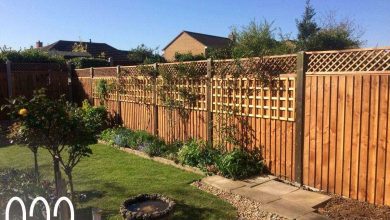The Different Types Used in Paving: Pros and Cons

Paving techniques improve not only the aesthetics but also the functionality of the outdoor space. It strengthens the surface and makes it appear clean. Outdoor space is the space outside of a closed building; it can be a house, office, hotel, or any other location. This outdoor space is vulnerable to dust, radiation, excessive vehicle pressure, rain, hailstones, and storms. To overcome all of these factors, it is critical to use paving material that is extremely difficult to work with.
There are various types of paving materials used, each with their own distinct characteristics. This article will go over the various types of paving and their benefits and drawbacks.
Types of Paving:
- Slate paving
- Porcelain paving
- Indian sandstone paving
- Limestone paving
- Granite paving
Slate paving
Slate has deep colors and is extremely hard. This paving material is extremely popular. It gives the garden an elegant appearance. It is a non-slip material. It is widely applied to walls, roofs, and outdoor surfaces.
Pros
Slate is a naturally occurring material with high hardness that is ideal for paving. Even when wet, it is non-slip. Its sober and dark colors give your space a lot of appeal.
Cons
The installation of slate paving is difficult. It gradually becomes flaky and thin in extreme weather conditions.
Porcelain paving
Porcelain paving is made from a combination of clay and minerals. These are man-made paving slabs that have been superheated in a furnace.
Pros
These are strong even in extremely hot conditions. These slabs are simple to install and maintain. Porcelain paving slabs come in a variety of appealing designs
Cons
Porcelain slabs are substantial. Installing these tiles takes a significant amount of time and money.
Indian sandstone paving
In terms of design, color, and durability, Indian sandstone paving slabs are unrivaled. This paving material is extremely durable and hard due to its natural occurrence. It is formed as a result of the high temperatures and pressures found in igneous rocks.
Pros
Kandla gray sandstone paving, Raj Blend, Camel Dust, Fossil Mint sandstone slabs, and other types of Indian sandstone paving slabs are available. All of these have eye-catching colors as well as natural patterns or veins. These slabs are available in a variety of appealing colors. These are too difficult to produce as a perfect paving material.
Cons
Due to rain and dust, it can fade gradually. It also gets stained over time.
Limestone paving slabs
Limestone paving slabs are also very durable. These add a lovely and sophisticated touch to your outdoor space. It is a lime and silicon mixture. It is also tough and long-lasting. It also has a pleasing design and color scheme.
Pros
The installation of limestone paving slabs is simple. These are ideal for extreme weather conditions. These are non-slip and have a beautiful texture. These are available in a variety of colors and patterns.
Con
Over time the shade of limestone slabs fades. It is prone to acid and chemical damage.
Granite paving
Granite paving is ideal for heavy foot traffic and driveways. It is a natural paving slab that occurs naturally so it is extremely hard and durable. It offers a glossy and beautiful appearance to your outdoor space.
Pros
Dust cannot be retained on a smooth surface. It is available in a variety of appealing colors. It is difficult to withstand heavy pressure and foot traffic. These are non-porous and will not be harmed by water.
Cons
Granite paving is extremely hard and cannot be easily cut. It is difficult to set up.
These are the five main types of paving slabs, along with their advantages and disadvantages. You can select the paving slabs that are ideal for your outdoor space.
Universal Paving offers a variety of paving slab designs and patterns that are both visually appealing and long-lasting. The most popular sandstone slabs are Kandla gray sandstone, Raj Blend, Camel dust, Fossil mint, Quartz white, and hammerstone gray, which are available in desirable sizes and tones to beautify your outdoor area.




